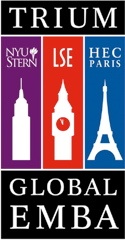 I taught a full afternoon plus an additional full-day track on strategic CRM in Kuala Lumpur in 2006. I've since taught in Singapore several times and maintain a deep affection for and interest in Malaysia
I taught a full afternoon plus an additional full-day track on strategic CRM in Kuala Lumpur in 2006. I've since taught in Singapore several times and maintain a deep affection for and interest in Malaysia
training and seminars
This page summarizes available presentation and training content.
I have taught and led executive training sessions at major American business schools, at the American Strategic Management Institute, at UNI Strategic, as a global guru with G-CEM (Shanghai), and under my own auspices.
the basics
A minimum of 10 and a maximum of 25 delegates are ideal for these courses, given the interactive exercises and density of new concepts. Two (2) two-hour phone interviews with the client are included prior to the session to aid in adjusting course content to the audience's needs. Up to 25 printed course kits are included. Delegates generally are required to read preliminary materials. In some cases, a preliminary exercise may be required, due at the beginning of the first session. Prices do not include travel and lodging.
Two-day certification course (CEM-CERT):$30,000 USD
Course content is approved and endorsed by the CRM Association, CustomerThink and other national and international customer management organizations. The course sequence is: Emotions and loyalty; voice of the customer; CEM strategy; branded experiences; touchpoint management; and CEM implementation. Sessions include exercises and case study discussions. At their option, delegates can submit a paper describing how course content has been, or could be, implemented within their organization. Instructors will assess the paper and provide a pass/fail. Passing delegates receive a certificate. All delegates can receive a letter of participation at the client's option.
Two-day CEM strategy and implementation course (CEM-STRATOPS): $18,000 USD
Course content is derived from our two-day certification course (see above), but provides a streamlined discussion of emotions and branding. Emphasizes the strategic importance of customer experience management, examining how experience design impacts sector positioning, operational design, customer-driven innovation, partner/supplier strategies, and organizational development. A theme for this session, jointly developed by the speaker and the client, will organize the material around the client's current challenges. Themes might include how customer experience management can save money and boost revenues in an economic downturn, or experience management as a critical component of globalization go-to-market strategies.
One-day CEM strategy (CEM-STRAT): $10,000 USD
 Dr. Brownell O'Conner, a specialist in strategic call center optimization based on Ireland, joined Sampson Lee of G-CEM and me in Dubai for a CEM certificate course in 2008.Customer experience management is a potentially disruptive management approach that can build greater comparative advantage for a company. Who is doing CEM well? Why is it working for them? What approach should a company take in defining, innovating and measuring the ways they touch customers? How do you create a business case for doing this, looking at revenues, cultural and market risks? An interactive day of instruction and exercises gives delegates an overview of the main concepts, relevant examples they can use, and guidance for further research and analysis.
Dr. Brownell O'Conner, a specialist in strategic call center optimization based on Ireland, joined Sampson Lee of G-CEM and me in Dubai for a CEM certificate course in 2008.Customer experience management is a potentially disruptive management approach that can build greater comparative advantage for a company. Who is doing CEM well? Why is it working for them? What approach should a company take in defining, innovating and measuring the ways they touch customers? How do you create a business case for doing this, looking at revenues, cultural and market risks? An interactive day of instruction and exercises gives delegates an overview of the main concepts, relevant examples they can use, and guidance for further research and analysis.
Global Customer Strategy
Global customer strategy development is a key concern to international, global, and even domestic companies, as their customer bases vary in their cultures, values, aspirations, and abilities to pay.
Global Business, Global Customers: How to compete, how to avoid failure
$7,000 USD
This half-day discussion focuses on the organizational and strategic consequences to a market-centric approach to internationalization, including threats and opportunities. Calling on detailed case studies from Wal-Mart, Apple, Procter & Gamble, Carrefour, Electronic Arts, LEGO and Subway, the presenter reveals core principles of global value proposition development, organizational culture, customer driven innovation, entry mode strategies and enterprise war room development.
Leadership
 On my most recent training in Singapore I had a class full of top managers and consultants from telecom and financial services sectors, trying to make sense of social networking, experience management, outcome-based value propositions and emotion curves on some of the most challenging products and services to differentiate.Leadership training is all the rage, but nothing could be more at stake, and so a serious, best-practices approach is critical. This half-day session focuses on how to become a visionary leader by making sure you see what's important, in yourself, in your organization, and in the market. This knowledge helps you select a target leadership style that suits both you and your professional situation, and gives you a roadmap to develop your business unit, collegial relationships, and organizational reports to lead effectively.
On my most recent training in Singapore I had a class full of top managers and consultants from telecom and financial services sectors, trying to make sense of social networking, experience management, outcome-based value propositions and emotion curves on some of the most challenging products and services to differentiate.Leadership training is all the rage, but nothing could be more at stake, and so a serious, best-practices approach is critical. This half-day session focuses on how to become a visionary leader by making sure you see what's important, in yourself, in your organization, and in the market. This knowledge helps you select a target leadership style that suits both you and your professional situation, and gives you a roadmap to develop your business unit, collegial relationships, and organizational reports to lead effectively.
Leadership Fundamentals: How your style and strengths help you lead
$7,000 USD
The goals of this half-day course are:
- To describe leadership styles, offering examples and showing their strengths and shortcomings as tools for modeling behavior and personal growth. In particular, we will compare and contrast the “servant leader” with the “charismatic leader”.
- To show how leaders employ cultural and interpersonal knowledge to create strong, motivated teams
- To describe the value and pitfalls of developing leadership competencies
- To explore leader qualities of ethical behavior, humility, courage, trust, vision, honesty, confidence, and the ability to appreciate complexity while striving for simplicity.
- To help participants identify and prioritize their next steps in developing their leadership skills and perspectives.
custom training
Custom training is available upon request. Some training is available only through my university partners, so if you ask me to speak or train on certain topics, I may introduce you to my executive education contacts at these institutions, who handle contracting and pricing.



